
- Homepage
- Brand
- 1saddle (382)
- Abetta (87)
- American Saddlery (39)
- Big Horn (219)
- Billy Cook (229)
- Billy Royal (50)
- Cactus (38)
- Circle Y (790)
- Crates (93)
- Dale Chavez (99)
- Fabtron (49)
- Handmade (57)
- Martin (37)
- Martin Saddlery (63)
- Mccall (52)
- Orlov Hill (351)
- Simco (119)
- Tex Tan (137)
- Tucker (130)
- Wintec (58)
- ... (4154)
- Material
- 100% Leather (2)
- Cordura (118)
- Cordura & Leather (21)
- Cordura & Suede (4)
- Cordura And Leather (2)
- Felt (7)
- Leather (2721)
- Leather & Cordura (4)
- Leather / Cordura (9)
- Leather / Suede (2)
- Leather / Synthetic (5)
- Leather And Fabric (2)
- Leather And Silver (11)
- Leder (6)
- Neoprene (2)
- Plastic (5)
- Roughout Leather (4)
- Synthetic (203)
- Tooled Leather (3)
- Wool (7)
- ... (4095)
- Saddle Design
- 6.5 Sqhb (7)
- 6.5\ (61)
- 6.5” Sqhb (13)
- 6.75 Gaited Bars (3)
- 6.75\ (5)
- 7 Fqhb (9)
- 7 Gaited Bars (2)
- A Fork (2)
- Basket Pattern (4)
- Custom (3)
- Flexible Tree (39)
- Mexican (5)
- Ranch (2)
- Reining (2)
- Silver Western Show (3)
- Traditional (2024)
- Trail, Gymkana (3)
- Treeless (25)
- Wade (2)
- Western (55)
- ... (4964)
- Saddle Type
- Barrel Racing (843)
- Children's (55)
- Cutting (108)
- Endurance (87)
- Equitation (61)
- Parade (22)
- Pleasure / Trail (1803)
- Pony (14)
- Ranch (382)
- Reining (152)
- Roping (446)
- Saddle Seat (21)
- Show (587)
- Trail (20)
- Trail Gaited (19)
- Training (35)
- Wade (55)
- Western (90)
- Western Saddle (12)
- Youth (12)
- ... (2409)
- Size
- Suitable For
- Any (6)
- Arabian (5)
- Arabian Horse (8)
- Barrel Racing (4)
- Draft Horse (97)
- Full Quarter Horse (151)
- Full Size Horse (5)
- Gaited Horse (152)
- Horse (715)
- Horses (25)
- Parades And Events (10)
- Pony (74)
- Quarter Horse (85)
- Quarter Horses (6)
- Riding (5)
- Semi Quarter Horse (173)
- Trail Riding (5)
- Western (9)
- Western Riding (8)
- Youth (6)
- ... (5684)
200 to 350+ Yr Old early 1800s Western Wood Saddle Mexico Vaquero Primitive
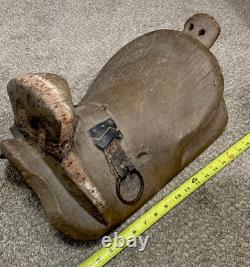
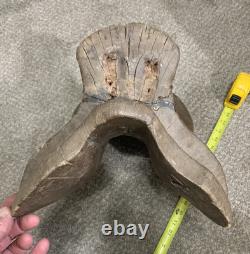
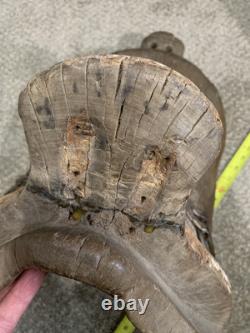
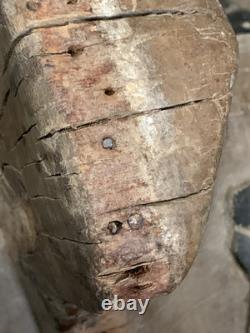
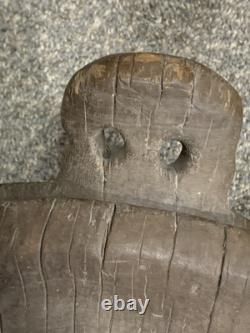
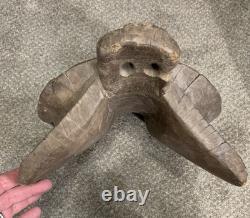
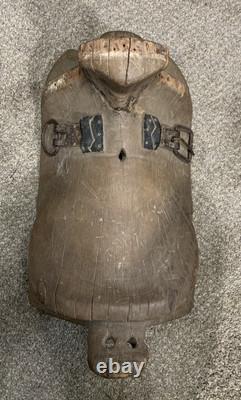
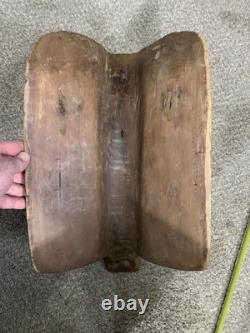
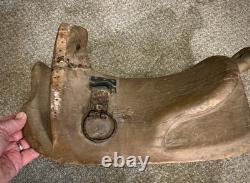
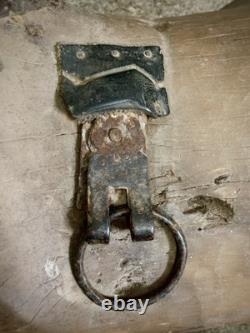
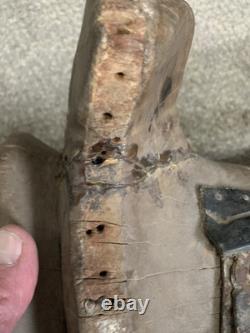


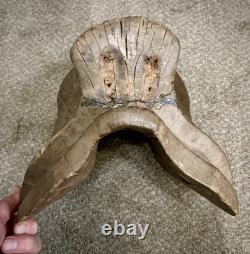
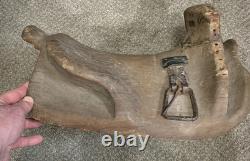
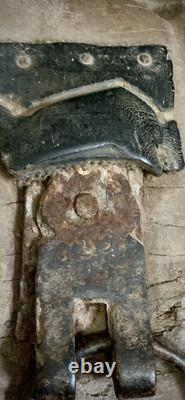
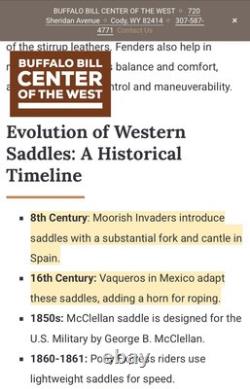
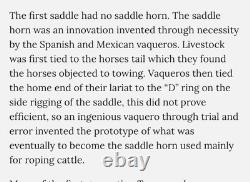
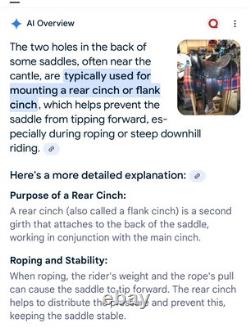


Early primitive antique western wood saddle. Possible Mexican Vaquero which would make it 350-400 years old. WE ARE QUESTIONING IF IT IS AN EALY VAQUERO SADDLE BASED ON THE 5 CRITERIA BELOW. Mexican vaqueros of the 1600s created the saddle horn that has become what we know as our western saddle today. This solid wood saddle has a very large horn and likewise two holes at the rear of the saddle used for cinching the rider onto the saddle more firmly so he would not be catapulted forward by only using the girth cinch.
Construction of the saddle shows very primitive design. The condition of the wood demonstrating extreme age.
The saddle is carved from one piece of solid wood, and not like the wood saddle trees that are seen on the Internet. Saddles of the 17th-18th century and & early 1800s were carved from solid wood. The nails, buckle and ring re hand forged cast iron, also very primitive in manufacture but a close observation shows design features consistent with 16-1700s workmanship. The line of nail holes going up and over the horn show that the saddle once had a decorative line of leather.
Early vaqueros were known for decorating their saddles. This tradition has continued and evolved into the beauty of Mexican saddle workmanship that is seen today. Overall an amazingly well preserved, early saddle worthy of addition to museum or discriminating personal collection.Do justly, love mercy and walk humbly. Things to keep in mind. If you are purchasing more than one lot on different days please notify us and wait to pay until we can combine all invoices. The hand forged nails and blacksmith forged belt, buckle, and ring used for cinching the girth of the horse show artistic design common to the 1600s. The line of nail holes going across the top of the saddle horn show there was once a line of leather going over it.
Vaqueros were known for decorating their saddles. Overall, an amazing and unique piece of history worthy of addition to a museum or discriminating personal collection.
